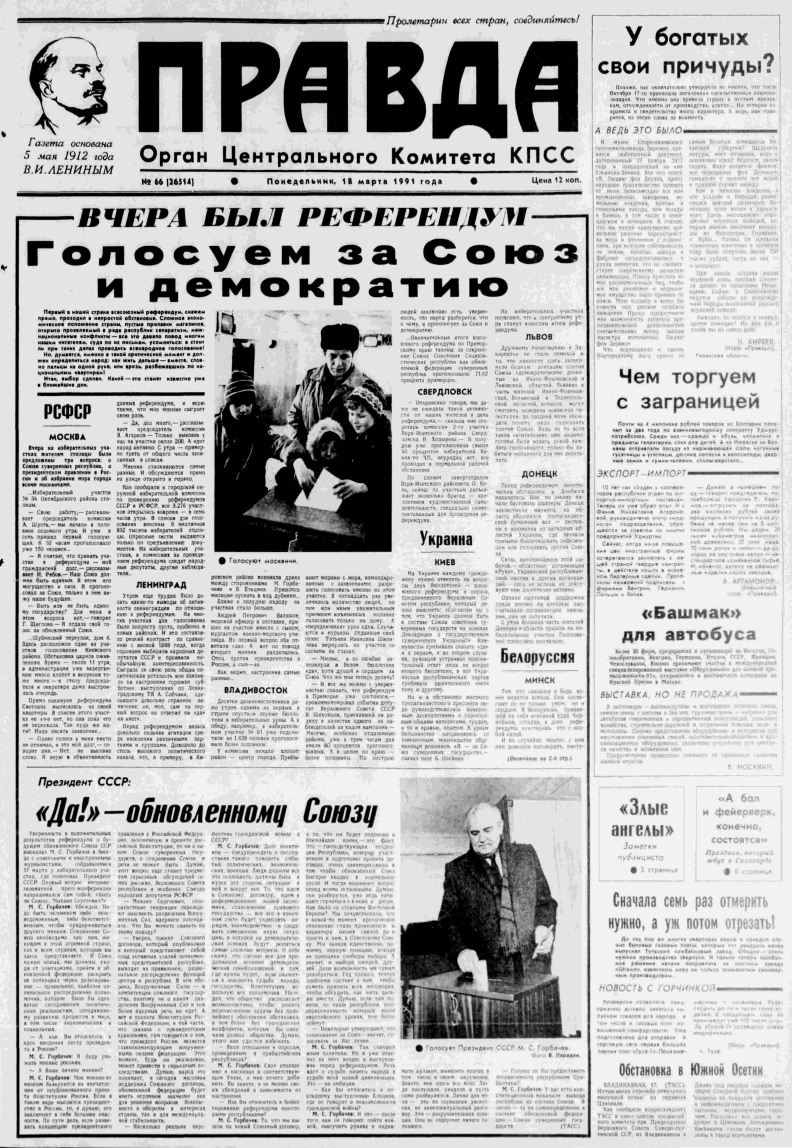1991 Referendum on Preserving the Union
[2 items]
On 17 March 1991, Soviet voters took to the polls to cast their ballots in an unprecedented referendum on the preservation of the Soviet confederation of states, which bound fifteen technically independent republics together under one central government. The ballot asked: “Do you believe it essential to preserve the USSR as a renewed federation of equal sovereign republics in which the rights and freedoms of a person of any nationality will be fully guaranteed?” (As translated in Archie Brown, The Gorbachev Factor (New York: Oxford University Press, 1996), 256).
Media reports on the voting exercise highlighted the event’s democratic nature, inscribing the procedure in a global history of democracy by including iconic photographs of citizens depositing their ballots into ballot boxes—including one of Gorbachev himself doing so. Although voting-like actions had taken place throughout the Soviet period, these images aimed to highlight what was new in the Soviet Union: a reinvigorated democratic sensibility produced by perestroika, Gorbachev’s far-reaching reform effort that had begun in 1985.
By all measures, the turnout was impressive. 80 percent of the eligible population participated, and 77.8 percent of voters voted YES. Yet these numbers obscured the nationalities crisis that shaped the election and its long-term aftermath. As coverage in Pravda pointed out, Armenia forbade the referendum from taking place, while governments in Lithuania, Latvia, Estonia, Moldavia, and Georgia refused to organize the process, though it took place anyway in some regions—primarily those populated largely by ethnic Russians—on the initiative of citizen activists.
The integral connection between Soviet media and democracy comes sharply into focus through Pravda’s coverage of the 1991 Referendum (“We voted for the Union and democracy,” trumpeted an 18 March headline)—and yet, so too does the nationalities crisis that shaped the Soviet dissolution and relations among former Soviet states into the present.

